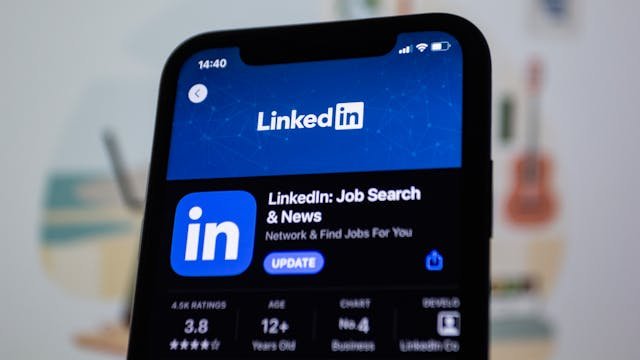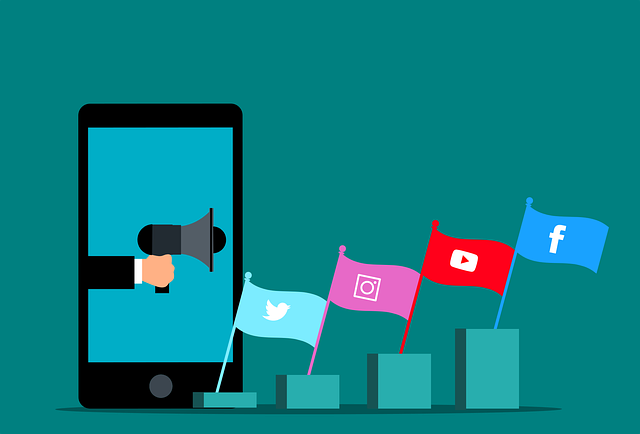Social media is a dynamic and powerful tool for marketing agencies to showcase their expertise, engage with clients, and attract new business. With the right strategies, marketing agencies can create innovative and compelling content that stands out in a crowded digital landscape. This article will explore a range of creative social media ideas tailored for marketing agencies, designed to boost engagement, demonstrate value, and drive growth.
Leveraging Video Content
Video content continues to dominate social media due to its engaging nature and ability to convey information quickly and effectively. For marketing agencies, leveraging video content strategically can showcase your expertise, build your brand, and drive client engagement. Here are advanced strategies for creating compelling video content that stands out.
Creating Educational Video Series
Develop educational video series that provide in-depth insights into various aspects of digital marketing. Each series can focus on a different topic, such as SEO, content marketing, social media strategies, or data analytics.
Plan a series of short, informative videos that build on each other, offering valuable tips and actionable advice. For instance, a series on SEO could cover keyword research, on-page optimization, link building, and tracking performance. Promote these videos across your social media channels and create a dedicated playlist on platforms like YouTube for easy access.
Hosting Virtual Workshops and Webinars
Virtual workshops and webinars allow you to engage with your audience in a more interactive and informative manner. Host regular sessions on relevant marketing topics, where you can share your expertise, answer questions, and provide practical solutions.
Use live streaming platforms like Zoom, YouTube Live, or Facebook Live to reach a broad audience. Promote these events in advance to build anticipation and encourage participation. Follow up with recorded versions of the webinars and highlight key takeaways in short video clips to extend the content’s reach.
Showcasing Client Success Stories
Create compelling video case studies that showcase your clients’ success stories. Highlight the challenges they faced, the strategies your agency implemented, and the results achieved. Use a mix of interviews, testimonials, and visual data to tell these stories effectively.
Feature these case studies on your social media platforms, website, and in presentations to potential clients. Client success stories not only demonstrate your agency’s capabilities but also provide social proof, building trust and credibility with your audience.
Producing Animated Explainer Videos

Animated explainer videos are an excellent way to simplify complex concepts and make them more digestible for your audience. Use animations to illustrate how your services work, the benefits they offer, and how they can solve specific problems for clients.
Keep these videos concise and engaging, using clear visuals and straightforward language. Share them on social media, embed them on your website, and include them in email campaigns to educate potential clients and drive interest in your services.
Leveraging User-Generated Video Content
Encourage your clients and followers to create video content showcasing their experiences with your agency. User-generated content adds authenticity and can be highly persuasive.
Create campaigns that invite clients to share their success stories, tips, or reviews in video format. Feature the best submissions on your social media channels and provide additional context or commentary to enhance the content. This approach not only generates valuable content but also fosters a sense of community and engagement.
Utilizing Short-Form Video Content
Short-form video content, such as TikToks, Instagram Reels, and YouTube Shorts, is highly effective for capturing attention quickly. Develop a series of short, engaging videos that highlight quick tips, behind-the-scenes glimpses, or snippets of longer content.
Use trending sounds, challenges, and hashtags to increase the visibility of your videos. Consistently post short-form content to keep your audience engaged and drive continuous interaction with your brand.
Creating Personalized Video Messages
Personalized video messages can add a personal touch to your client communications and marketing efforts. Use personalized videos to welcome new clients, provide updates on their projects, or thank them for their business.
Tools like Vidyard and Bonjoro can help you create and send personalized video messages easily. Personalized videos can enhance client relationships, improve retention, and make your communications more memorable.
Implementing Video Content in Email Marketing
Integrate video content into your email marketing campaigns to increase engagement and click-through rates. Include video thumbnails in your emails that link to full videos on your website or social media platforms.
Use videos to provide updates, share success stories, offer tutorials, or promote upcoming events. Video content can make your emails more dynamic and compelling, encouraging recipients to engage with your content.
Measuring and Analyzing Video Performance
Regularly measure and analyze the performance of your video content to understand what resonates with your audience and refine your strategy. Use analytics tools to track metrics such as views, engagement, watch time, and conversion rates.
Identify the types of videos that perform best and use these insights to guide future content creation. Experiment with different formats, topics, and styles to see what drives the most engagement and adjust your approach accordingly.
Interactive Content
Interactive content is a powerful way to engage your audience, encourage participation, and create a memorable experience. For marketing agencies, integrating interactive elements into your social media strategy can drive higher engagement rates and foster a deeper connection with your audience. Here are advanced strategies for creating and leveraging interactive content effectively.
Creating Interactive Infographics
Interactive infographics take traditional infographics to the next level by adding clickable elements, animations, and hover effects. These enhancements can make your data more engaging and easier to understand.
Develop interactive infographics that allow users to explore data points in more detail. For example, you could create an infographic that visualizes marketing trends, with each trend providing additional information when clicked. Share these infographics on your social media platforms and embed them in your blog posts or website for maximum reach.
Developing Customizable Content
Customizable content lets users personalize their experience, making it more relevant and engaging. Tools like quizzes, polls, and interactive templates can be highly effective.
Create interactive quizzes that help users identify their needs, preferences, or knowledge gaps. For instance, a quiz titled “What’s Your Ideal Social Media Strategy?” can guide users through a series of questions and provide personalized recommendations at the end. Promote these quizzes on social media and use the results to gather insights into your audience’s preferences.
Hosting Interactive Webinars
Transform your standard webinars into interactive experiences by incorporating polls, Q&A sessions, and live demonstrations. Encourage participants to engage with the content actively rather than passively consuming information.
Plan webinars that address common pain points or trending topics in digital marketing. Use interactive elements to keep the audience engaged and collect feedback in real-time. After the webinar, share highlights and key takeaways in follow-up posts to extend the engagement.
Implementing Augmented Reality (AR) Filters
AR filters can provide a fun and immersive way for users to interact with your brand. Develop custom AR filters for platforms like Instagram and Snapchat that align with your brand identity and campaigns.
For example, create an AR filter that visualizes different marketing concepts or trends, allowing users to see themselves in various marketing scenarios. Promote the filter across your social media channels and encourage users to share their experiences, creating a viral effect.
Engaging with Interactive Videos
Interactive videos allow viewers to choose their own path or explore different storylines. This format can significantly increase engagement by giving viewers control over their experience.
Produce interactive videos that showcase different aspects of your services or case studies. For instance, a video that lets viewers choose which part of a marketing campaign they want to learn more about can make the content more engaging and informative. Share these videos on platforms that support interactive elements, like YouTube or your website.
Creating Interactive Ebooks and Whitepapers
Transform your static ebooks and whitepapers into interactive digital assets. Add clickable elements, embedded videos, and interactive charts to make the content more engaging and easier to navigate.
Develop interactive ebooks that cover in-depth topics such as “The Ultimate Guide to Social Media Marketing” or “Advanced SEO Strategies.” Use these interactive features to provide a more engaging reading experience and encourage users to spend more time with your content. Promote these assets on social media and through email campaigns.
Conducting Interactive Surveys and Feedback Forms
Use interactive surveys and feedback forms to gather insights from your audience while engaging them in a meaningful way. Tools like Typeform and SurveyMonkey offer interactive survey options that are more engaging than traditional forms.
Create surveys that explore industry trends, customer satisfaction, or content preferences. Share the results with your audience to show that you value their input and are committed to continuous improvement. Use the insights gained to refine your content strategy and better meet your audience’s needs.
Developing Gamified Content
Gamification can make your content more engaging by adding elements of competition and reward. Develop games or challenges related to your services or industry.
For example, create a social media marketing challenge where participants complete tasks or answer questions to earn points and rewards. Promote the challenge on social media and offer incentives such as discounts, free consultations, or exclusive content for top performers. Gamified content can drive engagement and encourage users to interact with your brand more frequently.
Utilizing Interactive Maps and Timelines
Interactive maps and timelines can provide a visually appealing way to present data and tell stories. Use these tools to showcase your agency’s achievements, project timelines, or industry trends.
Create an interactive map that highlights your global reach or a timeline that illustrates the evolution of digital marketing strategies. Share these interactive visuals on your social media channels and embed them on your website to provide a dynamic and informative experience for your audience.
Showcasing Expertise and Thought Leadership
Demonstrating your agency’s expertise and thought leadership is crucial for attracting new clients and building credibility in the industry.
Thought-Provoking Articles and Blogs
Share insightful articles and blog posts that address current trends, challenges, and innovations in the marketing industry. Write about your perspectives on new social media algorithms, effective marketing strategies, or case studies of successful campaigns.
Publish these articles on your website and promote them across your social media channels. Use engaging visuals and compelling headlines to draw readers in. Encourage discussions by asking for opinions and insights from your followers, fostering a community of engaged professionals.
Expert Interviews and Webinars
Host interviews and webinars featuring industry experts and thought leaders. These sessions can provide valuable insights and practical advice to your audience. Topics can range from advanced digital marketing techniques to the future of social media.
Promote these events in advance, and provide follow-up content such as summaries, key takeaways, and recordings. Webinars and interviews can position your agency as a hub of knowledge and innovation, attracting clients who value expertise and continuous learning.
Infographics and Visual Data
Create infographics that present data and insights in a visually appealing format. Infographics are highly shareable and can effectively communicate complex information quickly. Use them to illustrate industry statistics, survey results, or step-by-step processes.
Share these infographics on your social media platforms, and consider creating a dedicated section on your website for downloadable resources. Visual data can enhance your credibility and provide valuable content that your audience will want to share.

Building a Community
Building a strong and engaged community around your marketing agency can significantly enhance brand loyalty, foster collaboration, and drive long-term success. For startup founders, cultivating a community requires strategic planning and consistent engagement. Here are advanced strategies to effectively build and sustain a thriving community around your marketing agency.
Developing a Branded Online Forum
Create a branded online forum where your clients, prospects, and industry peers can discuss marketing topics, share insights, and seek advice. This dedicated space can serve as a hub for knowledge exchange and networking.
Set up the forum on your website or use platforms like Discourse or Slack to facilitate discussions. Ensure that the forum is well-moderated to maintain a positive and respectful environment. Encourage participation by regularly posting discussion topics, hosting AMA (Ask Me Anything) sessions with your team, and featuring guest experts. Promote the forum across your social media channels to attract new members and drive engagement.
Hosting Regular Community Events
Organize regular virtual or in-person community events to foster connections and provide value to your audience. These events can include webinars, workshops, meetups, and networking sessions.
Plan themed events that address specific industry trends or challenges. For example, host a quarterly webinar series on “Emerging Trends in Digital Marketing” or organize monthly virtual coffee chats where community members can discuss their experiences and challenges. Promote these events through your social media channels, email newsletters, and your website to ensure maximum participation.
Creating a Mentorship Program
Establish a mentorship program that pairs experienced marketing professionals with newcomers or those looking to advance their careers. This initiative can add significant value to your community by facilitating knowledge transfer and personal growth.
Invite industry veterans to serve as mentors and match them with mentees based on their interests and goals. Provide resources and guidelines to help mentors and mentees make the most of their interactions. Promote the program through your social media channels and website to attract participants and showcase the value of your community.
Facilitating Peer-to-Peer Learning
Encourage peer-to-peer learning within your community by creating opportunities for members to share their knowledge and experiences. This approach not only enhances the collective expertise of the community but also fosters a sense of collaboration and support.
Organize peer-led workshops, panel discussions, and case study presentations. Create a “Member Spotlight” series where community members can share their success stories, challenges, and lessons learned. Promote these initiatives on your social media platforms to highlight the diverse expertise within your community and inspire others to contribute.
Leveraging User-Generated Content
User-generated content (UGC) can play a crucial role in building and sustaining a community. Encourage your community members to create and share content that showcases their experiences, insights, and achievements.
Create campaigns that invite members to submit blog posts, videos, or social media posts related to their marketing journeys. Feature the best submissions on your social media channels, website, and newsletters. Recognizing and celebrating user-generated content not only provides valuable content for your agency but also strengthens the sense of community and belonging among your members.
Implementing a Loyalty Program
Develop a loyalty program that rewards active and engaged community members. This program can include benefits such as exclusive access to content, discounts on services, early registration for events, and recognition within the community.
Track and reward participation through a points system or other metrics. Highlight top contributors and loyal members on your social media channels and within the community. A well-designed loyalty program can incentivize participation, drive engagement, and build long-term loyalty.
Promoting Collaboration and Co-Creation
Foster a culture of collaboration and co-creation within your community by involving members in the development of new initiatives, content, and services. This approach can enhance the sense of ownership and commitment among community members.
Invite members to participate in brainstorming sessions, feedback loops, and pilot programs. Create opportunities for co-creating content, such as collaborative blog posts, video series, or research projects. Share the outcomes of these collaborations on your social media channels to demonstrate the value of community input and inspire others to get involved.
Monitoring and Adapting to Community Needs
Regularly monitor the engagement and feedback within your community to understand their needs and preferences. Use surveys, polls, and analytics to gather insights and identify areas for improvement.
Adapt your community-building strategies based on these insights. For example, if members express interest in specific topics, organize targeted events or create dedicated discussion groups. If engagement levels drop, experiment with new formats or initiatives to re-energize the community. Continuously evolving based on community feedback ensures that your initiatives remain relevant and valuable.
Embracing New Technologies
Embracing new technologies can give your marketing agency a competitive edge, allowing you to create innovative and engaging content. These technologies can enhance your social media strategy, streamline operations, and provide unique value to your clients. Here are some advanced strategies for integrating new technologies into your social media marketing efforts.
Advanced Data Analytics
Utilize advanced data analytics tools to gain deeper insights into your social media performance and audience behavior. Tools like Google Analytics, HubSpot, and Sprout Social can provide detailed metrics on engagement, reach, and conversion rates.
Implement predictive analytics to forecast trends and customer behavior. Use these insights to refine your content strategy, target the right audience segments, and optimize your campaigns for better results. By leveraging data analytics, you can make more informed decisions and demonstrate your agency’s expertise in using data-driven strategies.
Blockchain for Transparency
Integrate blockchain technology to enhance transparency and trust in your social media campaigns. Blockchain can be used to verify the authenticity of digital advertising and track the distribution of content.
Use blockchain to create a transparent ledger of all transactions and engagements, ensuring that your clients can see exactly where their marketing dollars are going and how their campaigns are performing. This transparency can build trust with your clients and set your agency apart as an innovator in the industry.
Programmatic Advertising
Adopt programmatic advertising to automate the buying and placement of ads on social media platforms. Programmatic advertising uses AI and machine learning to target ads more effectively, optimizing for the best outcomes based on real-time data.
Develop a programmatic advertising strategy that includes dynamic creative optimization, where ad content is tailored to individual user preferences and behaviors. This approach can increase ad relevance, improve ROI, and reduce wasted ad spend.
Voice Search Optimization
As voice search becomes more prevalent, optimizing your content for voice queries is essential. Ensure that your social media content and website are optimized for voice search by using natural language, answering common questions, and focusing on long-tail keywords.
Create content that addresses the specific needs of voice search users, such as quick answers, how-to guides, and conversational blog posts. Promote this content on your social media channels, highlighting your expertise in voice search optimization.
Interactive and Immersive Content
Incorporate interactive and immersive content to engage your audience in new and exciting ways. Use technologies like 3D graphics, interactive infographics, and shoppable posts to create engaging experiences.
Develop interactive content that allows users to explore products, services, or concepts in a hands-on manner. For example, create interactive product demos or virtual showrooms that can be shared on social media. This type of content can capture attention and drive higher engagement rates.
AI-Powered Content Creation
Leverage AI-powered tools for content creation to streamline your workflow and enhance creativity. Tools like Copy.ai, Jasper, and Lumen5 can help generate ideas, write copy, and create videos based on AI algorithms.
Use these tools to produce high-quality content quickly, allowing your team to focus on strategy and creative direction. Experiment with AI-generated content to explore new formats and styles, and use analytics to measure its effectiveness.
Geolocation-Based Marketing

Implement geolocation-based marketing to deliver targeted content based on users’ physical locations. Use location data to create personalized marketing messages, offers, and promotions that are relevant to the audience’s current context.
Develop campaigns that leverage geofencing and beacon technology to reach users when they are near specific locations, such as stores, events, or landmarks. Promote these location-based offers on social media to drive foot traffic and increase local engagement.
Personalization Engines
Use personalization engines to tailor your social media content and marketing messages to individual users. These engines analyze user data to deliver personalized recommendations, content, and experiences.
Create personalized social media ads and posts that address the unique interests and needs of each user. Use dynamic content that adapts based on user behavior, such as previous interactions, preferences, and demographic information. This level of personalization can improve user experience and increase conversion rates.
Virtual Influencers
Explore the use of virtual influencers to reach new audiences and create unique content. Virtual influencers are computer-generated personas that can be used to promote products and engage with followers on social media.
Develop virtual influencers that align with your brand’s values and aesthetics. Use them to create content that resonates with your target audience, such as product endorsements, lifestyle posts, and interactive campaigns. Virtual influencers can offer a fresh and innovative approach to influencer marketing.
Conclusion
Building a vibrant and engaged community around your marketing agency is essential for fostering long-term success and brand loyalty. By implementing strategic initiatives such as developing online forums, hosting regular events, creating mentorship programs, facilitating peer-to-peer learning, leveraging user-generated content, implementing loyalty programs, promoting collaboration, and continuously adapting to community needs, you can create a supportive and dynamic environment for your audience.
Read Next:
- Twitter’s Role in Disseminating Scientific SEO Content for Biotech Startups
- LinkedIn SEO for Lifesciences Networking
- Social Media Signals in Biotech SEO
- Infographics: Visualizing Complex Biotech Data
- Creating Engaging Content for Biotech Audiences






















Comments are closed.